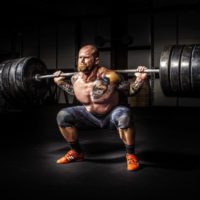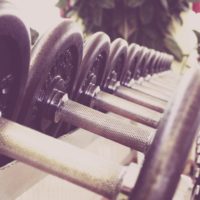The Ideal Muscular Body, Part 2: Muscle Size and Distinction
What makes a bodybuilder worthy of being crowned a champion?
In the first part of our series, we discussed the primary traits that competition judges are looking for in professional and amateur bodybuilders.
We discovered the importance of developing the “X-form” as well as building enough mass around the joints to dwarf your joints to the point that they seem small in comparison to the muscle fibers attached to them.
Today’s blog post covers the second set of ideal traits of competition-ready bodybuilders.
The Second Set
1. The Mass Factor
Seeing veteran Mr. Olympias in peak shape during competition season can be a breathtaking experience.
Typically, professional bodybuilders gain as much as 40 pounds of muscle mass during their competition season training sessions. Mr. Olympias are often heavyweights, too: the majority weight at least 200 pounds but have extremely low body fat ratios.
When you’re “cutting” or removing fat from your system, you end up with your “dry weight” or “competition weight”.
A bodybuilder’s dry weight can also be taken as an indicator of his success in gaining muscle mass. If a bodybuilder is able to bring his weight up by 30 pounds while cutting fat, that means he was able to gain 30 pounds of lean muscle mass!
Size really does matter in professional and amateur bodybuilding competitions. Aim to reach the following girths and widths and you should be ready to start competing soon:
Arm girth – 51 cm.
Chest width – 127 cm.
Calf girth – 51 cm.
Thigh girth – 72 cm.
Take note that size is a big factor but the overall aesthetics of your muscles matter, too.
Some international strongmen have these muscular dimensions but they also have a much higher body fat ratio compared to bodybuilders who compete.
What I’m saying is your muscles need to have a “ripped and shredded” appearance that judges love. You can accomplish this by bringing your body fat ratio as low as you can while increasing your protein intake and by maintaining a high degree of discipline while working out.
Also, depending on your body type you may also want to increase or decrease your sets to ensure that catabolism doesn’t get in the way of hard gains.
2. Balanced Muscular Physique
Bodybuilding competitions are highly visual events and every aesthetic element is often used to judge the overall impact of a bodybuilder. In the previous section, you learned that muscle mass plays a role in building the overall appearance of a bodybuilder. You can’t develop the “X-frame” without large muscles.
When you finally achieve the “X-frame”, it’s time to zoom into specific proportions of your body. The upper and lower regions of your body must be balanced.
The same principle applies to the left and right sides of your body. While it is not realistic to see completely identical biceps, there must be notable similarity between the left-side muscles and right-side muscles.
If you want an ideal model for proportion, try studying the classical statues from Ancient Greece. These muscular statues are considered the baseline models for the “X-frame” in modern bodybuilding.
3. Muscle Appearance and Projection
The surface appearance of muscles are also analyzed during competitions. Here are some essential guidelines to get you started on the right track:
i. Muscle length – Aim to develop musculature that extends from joint to joint. This is actually more challenging than it sounds because the insertion of specific muscles are determined by a person’s DNA.
If you have short muscle fibers and there are noticeable spaces in between muscles, the most that you can do is gain more mass to compensate for these gaps.
ii. Blood vessels – This may sound crazy to non-bodybuilders but vasculature actually enhances the appearance of prominent muscle fibers. Professional bodybuilders do their best to make their natural vasculature to emerge whenever they flex.
Apart from the aesthetic merits of having fully engorged blood vessels when flexing, judges also consider surface vasculature as a clear sign that the bodybuilder has achieved an ideal body fat and muscle ratio.
iii. Muscle distinctness – As I have mentioned earlier, your body fat ratio matters. Judges in bodybuilding competitions won’t be approaching you with measuring caliper – they will be basing their analysis purely on what is observable.
Body fat naturally covers muscle definition so striations are very important. Striations are the distinct formation markers or patterns of each muscle group. The deeper and more recognizable the striations of your muscles, the better off you will be in a competition.



